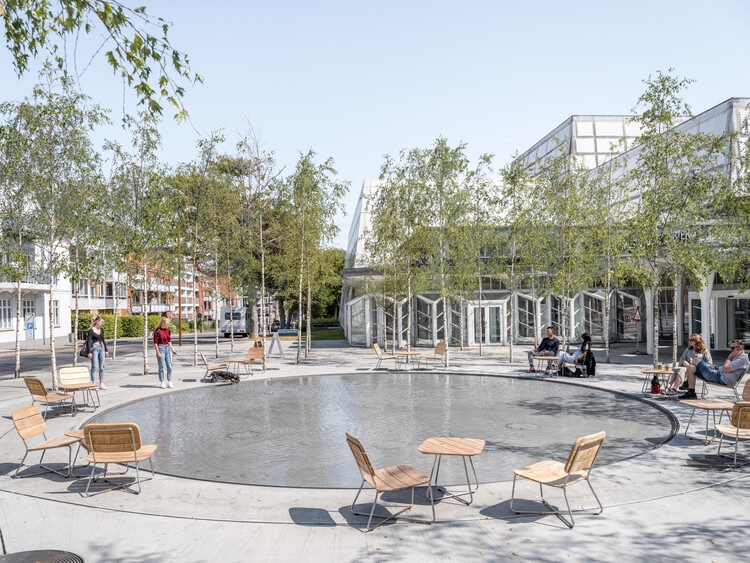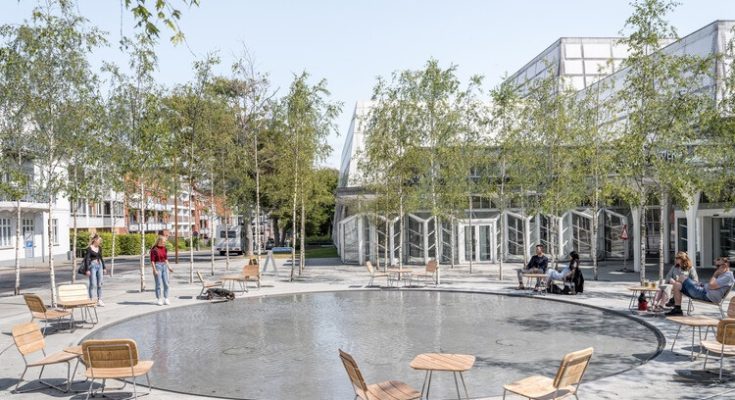Public space design is a crucial element in shaping equitable and inclusive urban environments. As cities evolve, the design and management of public spaces—such as parks, plazas, streets, and community centers—play a significant role in promoting social equity.
By ensuring that these spaces are accessible, safe, and welcoming for all members of the community, urban planners and designers can help bridge social divides and foster a sense of belonging among diverse populations.

Principles of Equitable Public Space Design
- Accessibility: An equitable public space must be accessible to everyone, including individuals with disabilities, the elderly, and those from various socio-economic backgrounds. This involves designing spaces with universal design principles, such as ramps, tactile paving, and adequate seating, to ensure that all people can navigate and use the space comfortably.
- Inclusivity: Public spaces should cater to diverse needs and preferences. This includes providing amenities and facilities for different age groups, cultural backgrounds, and interests. For instance, playgrounds for children, exercise areas for adults, and quiet zones for relaxation can accommodate a broad range of activities and social interactions.
- Safety and Security: Safety is paramount in ensuring that public spaces are welcoming to all. This involves implementing good lighting, clear sightlines, and regular maintenance to create environments where people feel secure. Community policing and the involvement of local residents in safety initiatives can further enhance the sense of security.
- Affordability: Designing public spaces that are free to use and maintain low operational costs helps ensure that they remain accessible to all, regardless of economic status. Amenities such as free Wi-Fi, public restrooms, and water fountains can enhance the usability of these spaces without imposing additional financial burdens on users.
- Community Engagement: Involving local communities in the design and planning process is essential for creating public spaces that reflect their needs and preferences. Engaging residents through surveys, workshops, and participatory design processes helps ensure that the space serves the community effectively and fosters a sense of ownership and pride.
Impact on Social Equity
1. Reducing Inequality: Well-designed public spaces can reduce social and economic inequalities by providing equal access to recreational, cultural, and social opportunities. By improving the quality and availability of public spaces in underserved areas, cities can help address disparities and improve the overall quality of life for marginalized communities.
2. Enhancing Social Cohesion: Public spaces that are designed with equity in mind promote social interaction and integration. Spaces that cater to diverse groups encourage cross-cultural exchanges and foster community ties, helping to build a more cohesive and inclusive society.
3. Supporting Mental and Physical Health: Accessible and well-designed public spaces contribute to the mental and physical well-being of all individuals. Green spaces, recreational facilities, and areas for social gathering provide opportunities for exercise, relaxation, and socialization, which are essential for maintaining health and well-being.
4. Promoting Civic Engagement: Equitable public spaces serve as venues for community events, civic activities, and public discourse. By providing accessible and welcoming spaces for public engagement, cities can encourage greater participation in civic life and strengthen democratic processes.
Challenges and Solutions
Despite the clear benefits of equitable public space design, several challenges need to be addressed:
- Funding and Resources: Limited budgets and competing priorities can constrain efforts to design and maintain equitable public spaces. Solutions include seeking alternative funding sources such as grants, public-private partnerships, and community fundraising efforts to support the development and upkeep of these spaces.
- Gentrification: The redevelopment of public spaces can sometimes lead to gentrification, displacing existing communities and exacerbating inequality. Strategies to mitigate this risk include ensuring affordable housing options, involving local residents in decision-making, and implementing policies that prioritize the needs of low-income communities.
- Cultural Sensitivity: Designing public spaces that respect and reflect diverse cultural backgrounds can be challenging. Engaging with cultural leaders and community representatives during the design process can help ensure that spaces are inclusive and culturally sensitive.
Case Studies
New York City, USA: The NYC Parks Department has implemented several initiatives to improve social equity in public space design. Projects like the “Parks Without Borders” program aim to enhance park accessibility and connectivity, particularly in underserved neighborhoods. The initiative focuses on creating safe, welcoming, and well-maintained spaces that serve diverse community needs.
Bogotá, Colombia: Bogotá’s “Ciclovía” program, which closes major streets to vehicles and opens them to pedestrians and cyclists on Sundays and holidays, is a notable example of equitable public space use. This initiative provides free recreational space to all residents, promoting physical activity and social interaction in a city with significant socio-economic diversity.
Melbourne, Australia: The Melbourne Urban Forest Strategy emphasizes creating equitable green spaces across the city. The strategy includes increasing tree canopy cover in underserved areas, developing pocket parks, and ensuring that green spaces are accessible to all residents, regardless of their socio-economic status.
Conclusion
Public space design is a powerful tool for advancing social equity in urban environments. By prioritizing accessibility, inclusivity, safety, and community engagement, cities can create public spaces that serve the diverse needs of their populations and promote a more equitable and cohesive society. Addressing challenges and implementing thoughtful solutions ensures that public spaces contribute positively to the well-being of all residents and support the development of vibrant, inclusive communities.




